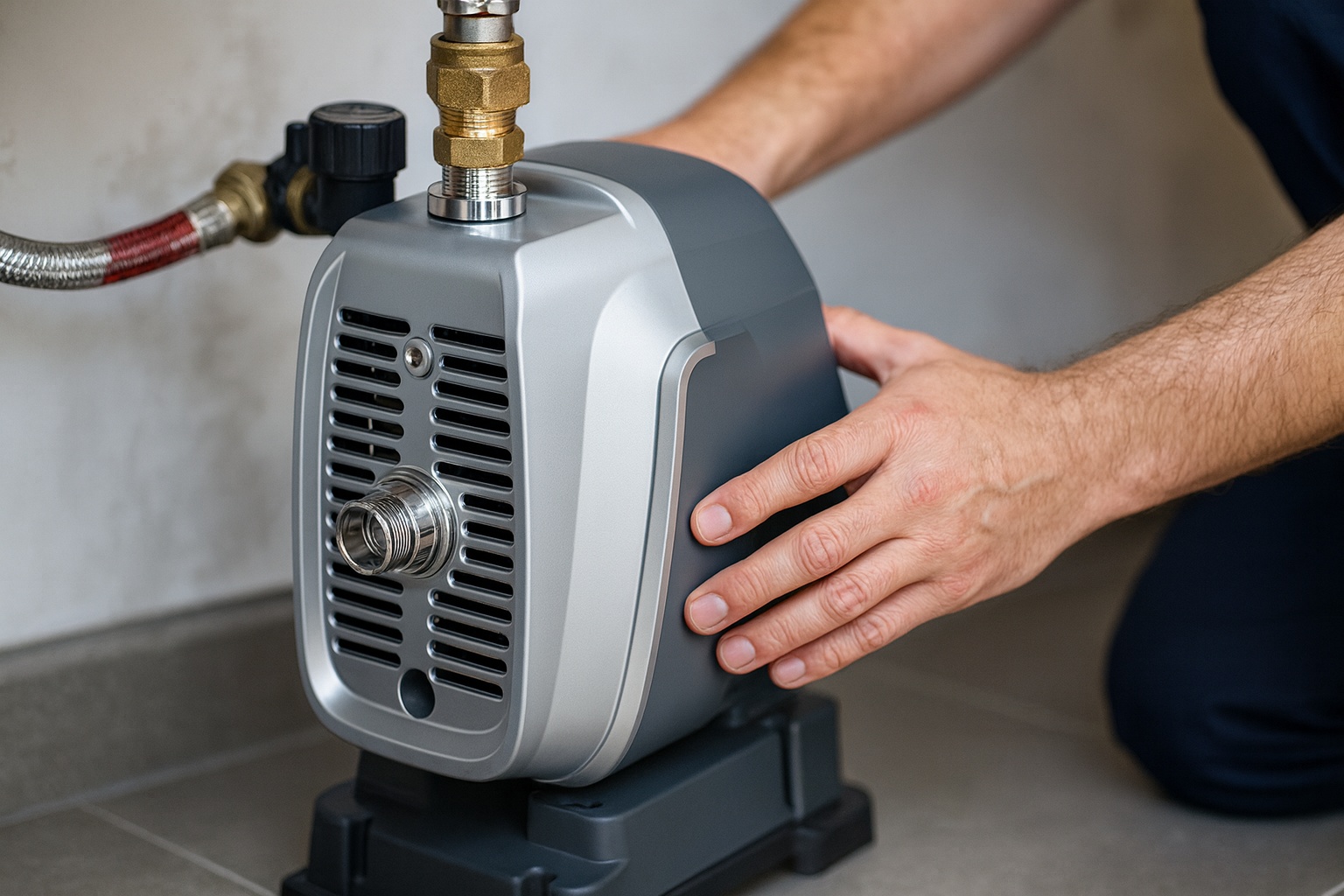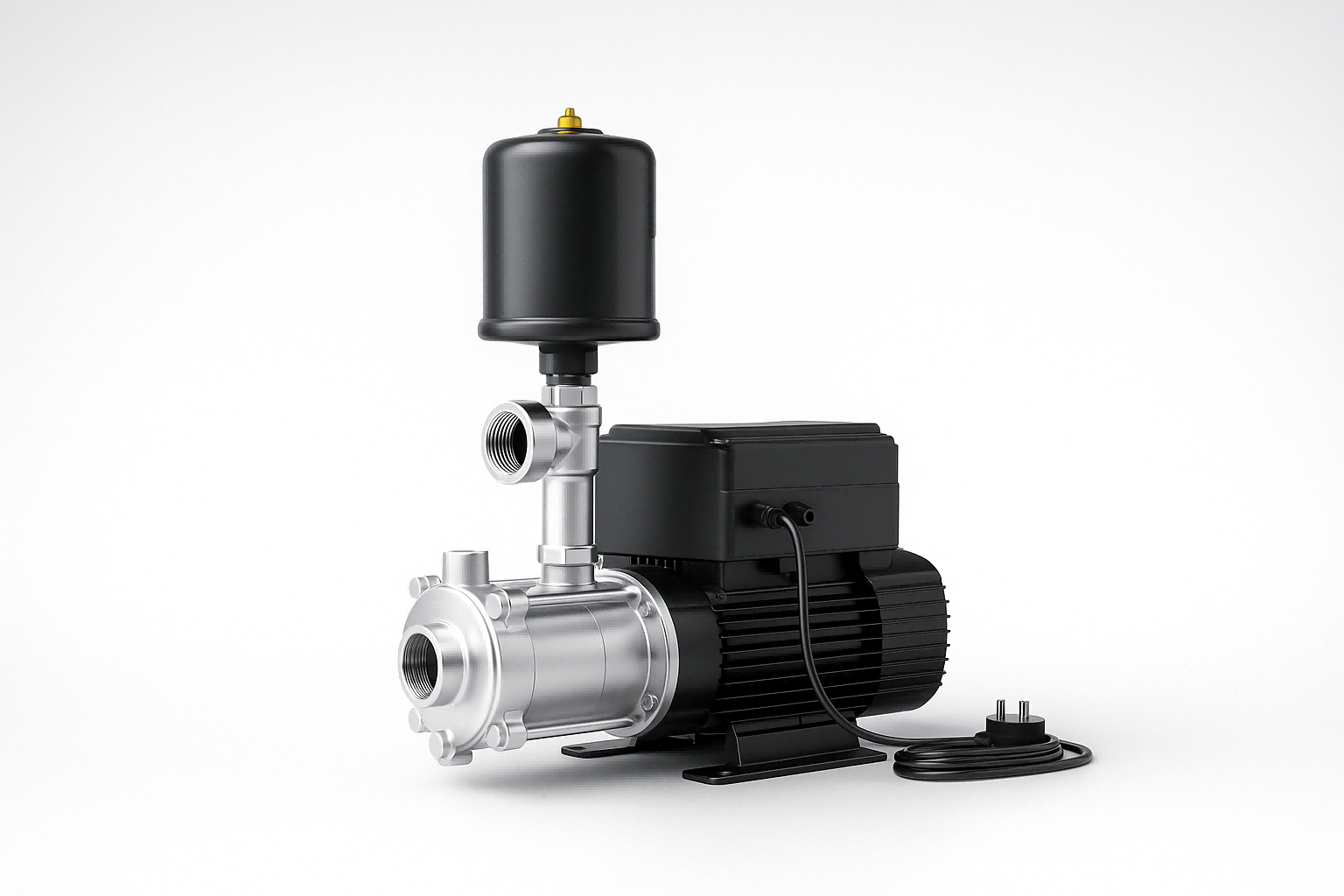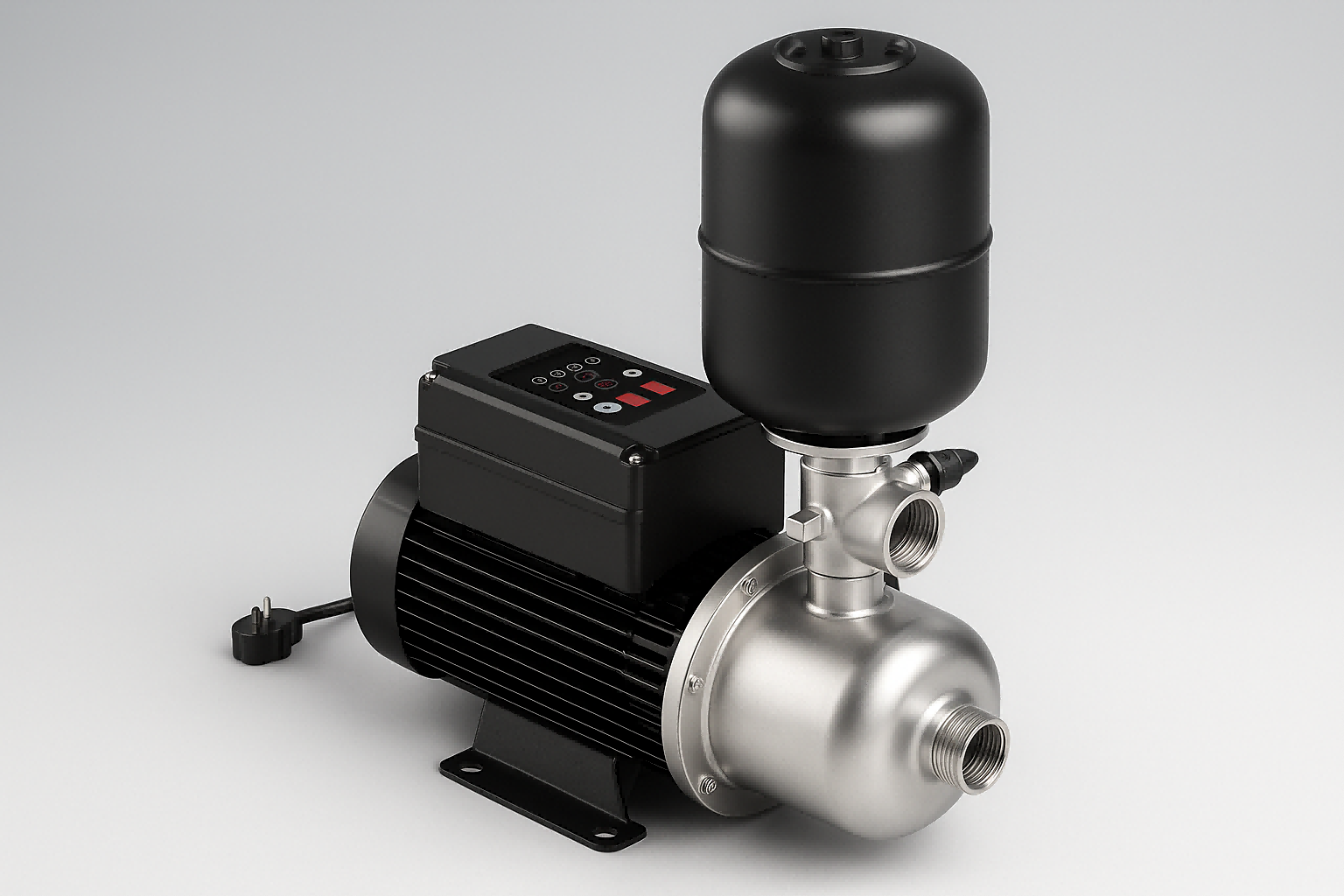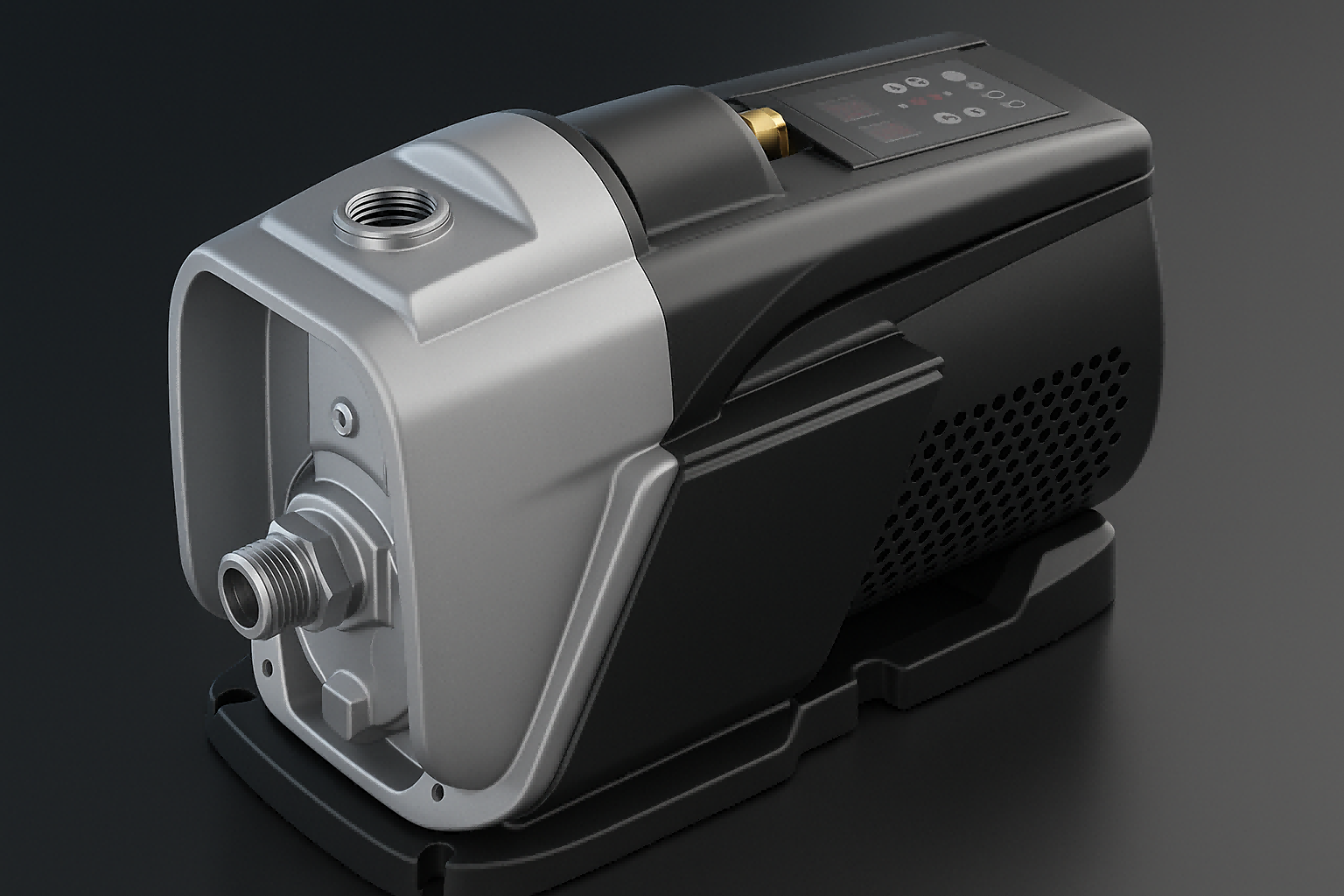Struggling to move water uphill without a reliable power grid? Traditional methods can be inefficient, leaving you with weak flow or high maintenance. Discover proven mechanical and modern off-grid solutions.
Yes, you can make water go uphill without grid electricity using various methods. These include the siphon, which uses gravity and pressure differentials, and the hydraulic ram pump, which harnesses water's own momentum. Other options are solar-powered pumps and wind-powered pumps, which use renewable energy sources.

Moving water against gravity might seem like a magic trick, but it's all about cleverly harnessing energy.
Whether it's from a difference in height, the force of moving water, or renewable sources like the sun, physics provides several ingenious solutions.
Some of these methods are ancient and simple, while others represent modern off-grid technology.
Let's explore these fascinating techniques, from simple DIY setups to robust, self-sufficient systems, to see how they work and which one might be the perfect fit for your needs.
Can You Really Pump Water Without Any Power?
Frustrated by "free energy" pump videos that seem too good to be true? These magical devices often mask the real physics at play. Let's uncover the science behind moving water without a plug.
It's impossible to create energy from nothing, so "free energy" pumps don't exist. However, you can pump water without an external electrical source by converting one form of energy into another, such as gravitational potential energy (siphons) or kinetic energy (ram pumps).
The internet is filled with videos of perpetual motion machines seemingly spouting endless streams of water.
These devices appear to defy the fundamental laws of physics, specifically the law of conservation of energy.
Energy cannot be created or destroyed; it can only be changed from one form to another.
So, while you can't get something for nothing, you can cleverly manipulate existing energy in a system to do work, like moving water.
The Source of "Power"
The energy used in non-electric pumps doesn't come from a magical source.
It comes from tangible, physical principles.
- Gravitational Potential Energy: Water stored at a higher elevation has potential energy. A siphon works by creating a path for this water to move to a lower point, releasing that energy. The system isn't creating energy; it's losing it.
- Kinetic Energy: The momentum of a large volume of falling water contains significant kinetic energy. A ram pump captures this energy in a rapid, repeating cycle to push a small amount of water to a much higher elevation.
- Renewable Energy: Solar and wind pumps convert energy from the sun or wind into mechanical force to move water. The "power" isn't free, but the source is renewable and readily available.
Debunking the Myths
Those viral videos often use clever tricks to hide the real mechanism.
A hidden electric pump, clever camera angles, or a system that only runs for a short time can create a compelling illusion.
If a device claims to pump water from a lower source to a higher outlet without any visible energy input and without expelling any "waste" water, it's almost certainly not what it seems.
True unpowered pumps always involve an energy trade-off.
A siphon requires the outlet to be lower than the source, and a ram pump must waste a large volume of water to lift a small volume.
Understanding these principles is key to separating practical science from online fiction.
The Siphon Pump: A Simple Gravity Trick
Need a simple, cheap way to drain a container or pond? Setting up a siphon is incredibly easy, but understanding the conditions required for it to work is key to avoiding a frustrating mess.
A siphon is a tube that moves liquid uphill, over an obstacle, before it flows down to a lower level. It works due to a pressure difference created by the weight of the falling water in the longer leg of the tube, effectively pulling water up the shorter leg.
The siphon is perhaps the most accessible and straightforward method for moving water without an external pump.
It's a perfect example of applied physics that requires nothing more than a tube and a difference in elevation.
It doesn’t create energy; rather, it provides a pathway for water to move from a state of higher potential energy to lower potential energy.
How to Make a Siphon Work
Setting up a siphon is simple, but it depends on two critical conditions being met continuously.
- The Outlet Must Be Lower Than the Inlet: The final exit point of the tube must be physically lower than the surface level of the water in the source container. The greater this height difference, the faster the water will flow.
- The Tube Must Be Full of Water: The siphon depends on a continuous, unbroken column of water. Air bubbles can break this column and stop the flow. This is why you must first "prime" the siphon by filling the tube with water before starting.
Understanding the Physics
The common explanation is that atmospheric pressure pushes water up the intake side of the tube.
A more complete picture involves the force of gravity on the column of water.
| Concept | Description |
|---|---|
| Pressure Differential | Once flowing, the weight of the water in the longer, downward leg creates a lower pressure at the top of the bend than the atmospheric pressure acting on the water's surface in the source container. |
| Cohesion | Water molecules stick together (cohesion), allowing the falling water in the descending leg to pull the water in the ascending leg up and over the bend. |
| Energy Loss | The entire process is a net loss of energy. For every kilogram of water moved, its gravitational potential energy decreases because it ends up at a lower elevation. It's a "losing energy" pump, not a "free energy" pump. |
This method is ideal for tasks like draining pools, aquariums, or elevated ponds.
However, its limitation is clear: it can never move water to a location that is higher than the original source.
The Ram Pump: Using Water's Own Power
Have a stream with a steady flow and a bit of a drop? A ram pump could be your ticket to pumping water uphill 24/7 without fuel or electricity, but its unique mechanics require a specific setup.
A hydraulic ram pump is a clever device that uses the energy of a large amount of falling water to pump a smaller amount of water to a location much higher than the original source. It works by repeatedly using the "water hammer" effect to generate high pressure.
The ram pump is a brilliant, self-powered machine that has been used for centuries.
It’s an excellent solution for properties with a spring or stream that has both a consistent flow and a natural drop in elevation.
Unlike a siphon, a ram pump can lift water significantly higher than its source, but this impressive feat comes at the cost of efficiency.
The Ram Pump Cycle
The pump's operation is a continuous, noisy cycle powered by two valves.
- Acceleration: Water flows down a "drive pipe" from the source, gaining speed and exiting through a "waste valve."
- Water Hammer: As the water's speed increases, it forces the waste valve to slam shut. The momentum of the moving water has nowhere to go, causing a sudden, massive pressure spike—this is the water hammer effect.
- Delivery: This high-pressure spike forces open a second "delivery valve," pushing a small amount of water up a delivery pipe toward your storage tank.
- Reset: The pressure drops, the delivery valve closes, and the waste valve falls open again, allowing water to flow out and repeat the cycle, often multiple times per second.
Key Setup Requirements
A ram pump is not a one-size-fits-all solution.
Success depends entirely on your site's geography.
- "Fall" is Essential: You need a source of water (like a stream or pond) that you can pipe downhill to the pump. This vertical drop is called the "fall" or "head."
- "Lift" is the Goal: The "lift" is the vertical height you want to pump the water to from the pump's location. A general rule of thumb is that a ram pump can lift water about 7-10 times the height of the fall. For every 1 foot of fall, you might achieve 7-10 feet of lift.
- Wastewater is Necessary: Ram pumps are inefficient by design. To lift a small amount of water high, they must "waste" a large amount of water that flows out of the waste valve. Typically, only 10-20% of the water flowing to the pump is actually delivered to the destination.
This ingenious device is perfect for continuously trickling water into an uphill storage tank, making it a reliable, off-grid water source for gardens or livestock.
Harnessing Nature: Solar and Wind-Powered Pumps
Want a modern, reliable off-grid water solution? Solar and wind pumps offer a sustainable way to move water, but choosing the right system depends on your location's climate and your water needs.
Solar and wind-powered pumps convert natural, renewable energy into mechanical power to lift water. Solar pumps use photovoltaic (PV) panels to generate electricity, while wind pumps (windmills) use wind turbines to directly drive a pump mechanism, providing sustainable off-grid water solutions.
When physics tricks like siphons or ram pumps aren't suitable for your site, turning to renewable energy is the next logical step.
Solar and wind power provide robust and increasingly affordable ways to pump water without any connection to the electrical grid.
These systems are not "powerless" but rather powered by a free and inexhaustible fuel source.
Solar Water Pumps
Solar pumping is one of the most popular off-grid solutions due to the falling cost of solar panels and the reliability of the technology.
A typical system consists of a solar panel array connected to a specialized pump.
Key Components and Considerations
- DC vs. AC Pumps:
- DC (Direct Current) Pumps: These are highly efficient as they can run directly off the power generated by solar panels without the need for an inverter or batteries. They are the most common choice for dedicated solar pumping systems.
- AC (Alternating Current) Pumps: If you want to use a standard AC pump, you'll need an inverter to convert the DC power from the panels and likely a battery bank to ensure a stable power supply.
- Sizing the System: The size of your solar array and pump depends on three factors: how much water you need per day (flow rate), how high you need to lift it (head), and how many hours of peak sunlight your location receives daily.
- Backup Power: For critical applications, a battery bank can be added to the system. This stores excess energy generated during sunny periods, allowing the pump to run at night or on cloudy days.
Wind-Powered Pumps
The classic farm windmill is an iconic example of a wind-powered pump.
While less common now, they remain an effective solution in areas with consistent wind.
- Mechanical Operation: Traditional windmills use the rotational energy from their blades to drive a piston pump rod up and down, lifting water from a well with each stroke.
- Best Use Cases: They are best suited for locations with consistent, steady winds rather than areas with occasional strong gusts. They are excellent for slowly filling a large storage tank or livestock trough over time.
- Modern Variations: Some modern systems use a wind turbine to generate electricity, which can power a conventional electric pump, offering more flexibility than a direct mechanical linkage.
Both solar and wind pumps represent a significant upfront investment but offer long-term savings with minimal running costs and a low environmental impact.
Beyond Basics: When Do You Need a Modern Pumping Solution?
Are you still relying on manual controls, experiencing fluctuating water pressure, or paying high energy bills for your pumping system? These are signs that it's time to upgrade to an intelligent, automated solution.
When reliability, stable pressure, energy efficiency, and remote control are critical, basic pumps fall short. A modern VFD (Variable Frequency Drive) booster pump is needed for applications demanding consistent performance, system protection, and the lowest possible operating costs.
While non-electric and simple electric pumps serve important purposes, they lack the intelligence and efficiency required by modern residential, commercial, and agricultural systems.
For importers and distributors whose clients demand quiet operation, unwavering pressure, and protection for their investment, a technologically advanced solution is the only answer.
The limitations of traditional systems create a clear need for something better.
Limitations of Conventional Pumps
- Wasted Energy: Standard pumps run at a single, full speed regardless of demand, wasting massive amounts of electricity.
- Fluctuating Pressure: They create noticeable pressure drops and surges as they cycle on and off, leading to an inconsistent user experience.
- Mechanical Stress: The violent start-stop cycles cause water hammer and place significant stress on the pump and plumbing, leading to premature failure.
- No Protection: Basic pumps lack integrated safeguards, leaving them vulnerable to damage from dry running, power surges, or overheating.
The Intelligent VFD Booster Pump Advantage
This is where advanced technology transforms water management.
A top-tier intelligent booster pump, powered by a Permanent Magnet Synchronous Motor (PMSM) and controlled by a Variable Frequency Drive (VFD), solves every one of these problems.
| Feature | Benefit |
|---|---|
| VFD Control | The pump precisely adjusts its speed in real-time to match water demand, maintaining constant, unwavering pressure at all times. |
| PMSM Motor | This highly efficient motor technology works with the VFD to slash energy consumption by up to 50% compared to standard pumps. |
| Soft Start/Stop | By gradually ramping speed up and down, the pump eliminates water hammer and reduces mechanical stress, dramatically extending the life of the entire system. |
| Integrated Protections | A suite of built-in sensors and software provides comprehensive protection against issues like dry-running, overheating, voltage fluctuations, freezing, and leaks. |
| Ultra-Quiet Operation | The combination of a superior motor and intelligent control results in noise levels often below 50dB, making them suitable for installation anywhere. |
For businesses supplying water systems, offering a product with these features is not just an upgrade; it's a fundamental shift towards providing a more reliable, efficient, and durable solution that meets the high expectations of today's market.
Conclusion
You can move water uphill without grid power using siphons, ram pumps, or renewables. For modern demands, intelligent VFD pumps offer unmatched efficiency, constant pressure, and superior reliability for any application.
FAQs
Can a siphon work in a vacuum?
No, a siphon relies on atmospheric pressure on the surface of the source liquid to help push it up the tube. In a perfect vacuum, there is no atmospheric pressure, so it would not work.
How high can a ram pump lift water?
A ram pump can typically lift water 7 to 10 times the height of the "fall" (the vertical drop from the water source to the pump). For every meter of fall, it can lift water 7-10 meters high.
Are solar water pumps expensive?
The initial cost of solar water pumps can be higher than traditional pumps. However, they have very low running costs since they use free energy from the sun, often making them more cost-effective over their lifespan.
Do solar pumps work on cloudy days?
Solar pumps can still operate on cloudy days but at a reduced flow rate. For consistent operation, systems can be oversized or include a battery backup to store energy for use during low-light conditions.
What is the main advantage of a VFD pump?
The main advantage is energy efficiency. A VFD (Variable Frequency Drive) allows the pump to adjust its speed to match the real-time water demand, significantly reducing electricity consumption compared to a fixed-speed pump.
How does a pump's antifreeze protection work?
When the water temperature drops near freezing (e.g., below 5°C), the pump's sensor will trigger it to run periodically. This circulates the water, preventing it from freezing and damaging the pump and pipes.








